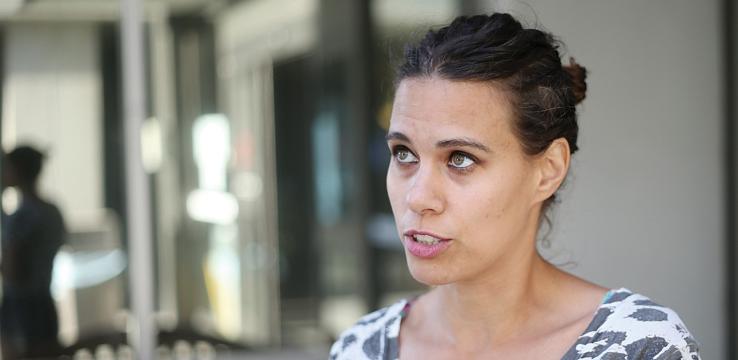
Sonja Trauss. Photo by Mike Koozmin, SF Examiner

Sonja Trauss. Photo by Mike Koozmin, SF Examiner
You wouldn’t expect the creator of the acronym SFBARF to be a shy flower, and you’d be right. Sonja Trauss started San Francisco Bay Area Renters Federation in 2014 out a desire to bring together the supporters of dense, tall, fast building who she was convinced existed but were not connected to each other. “I got tired of ranting with my friends about how hard it is to build,” she explains. “Our mission is to demonstrate that political support for new building does exist by showing up at neighborhood meetings and public hearings to speak in support of new residential development. A secondary mission is to connect probuilding people with each other.” Trauss began by writing letters in support of every potential housing project that went before the San Francisco Planning Commission, and having a few friends sign them. One day she met a developer for coffee and explained her idea to him: “There are lots of crazy people against development,’ I told him. ‘I’d like to create an organization of crazy people for development. Would that be helpful?’ He said yes. But in a way, I’ve failed, because there are actually very few crazy people on our mailing list. I’ve never found myself in contact with so many intelligent, high-functioning people as I’ve met since I started SFBARF. When people find us, they are thrilled. They are very relieved to find a world filled with people who agree that building new homes is necessary and probably even good.”
When did you first become interested in cities? After college I volunteered at my neighborhood association and that’s where I read Philadelphia’s zoning code. I was interested in the super local dramas that pass through neighborhood associations, and impressed with how much influence ordinary citizens can have at the local level. My father started his career as a tenant defense attorney and still works for Legal Services. Housing politics was always a topic in my home.
What is the most important thing SF could do to solve the housing crisis? Permit new housing like mad! Fundamentally, our problem is a raw shortage, and there is only one way to cure shortages: Make more of what you’re short on. I wish people would let go of the idea that San Francisco’s character is contained in its buildings. Buildings are just things: What makes us truly happy are our connections to other people, and opportunities to do satisfying work. The city’s character comes from its diversity of humans, and its status as a safe space to be weird. Increasing the amount of space for people to live and work in S.F. can only increase the possibilities for our life and work.
What’s your favorite city? Philadelphia, of course! It has the most intelligent grid.
Favorite urban view? Any view of Philadelphia rowhouses. People are like ducks. We just love the physical environment we were in during the happiest times of our lives. It imprints itself on our psyches and forever it will soothe us.
Favorite film about cities? Favorite book? My Own Private Idaho is a love letter to Portland and its environs. It’s a perfect movie for understanding the value and use of public space and excess capacity.
The Unheavenly City, the 1974 book by Edward Banfield, has had a huge influence on me. He is totally non-judgmental in his description of the benefits of a so-called bad neighborhood: if you have an erratic schedule, or your lifestyle requires you avoid police, you don’t mind or prefer a neighborhood that might not be quiet at night or where the police don’t come. Having this insight is essential to having a nuanced view of gentrification. Also, Uses of Disorder by Richard Sennett. These two books merge in my mind into a defense of very light planning. Both of those books answer to the question “What if we build something and I don’t like the new residents?” is a resounding “so what?”
You can’t be sure of anything. Life is full of uncertainty. But one person’s chaos is another person’s freedom. The times people liked best in SF were the 60s and 70s, when the squares moved to the suburbs, there was very little supervision, the buildings were all excess capacity and people were using them for purposes other than what was originally intended. I want to get back to a time of light supervision and excessive building.